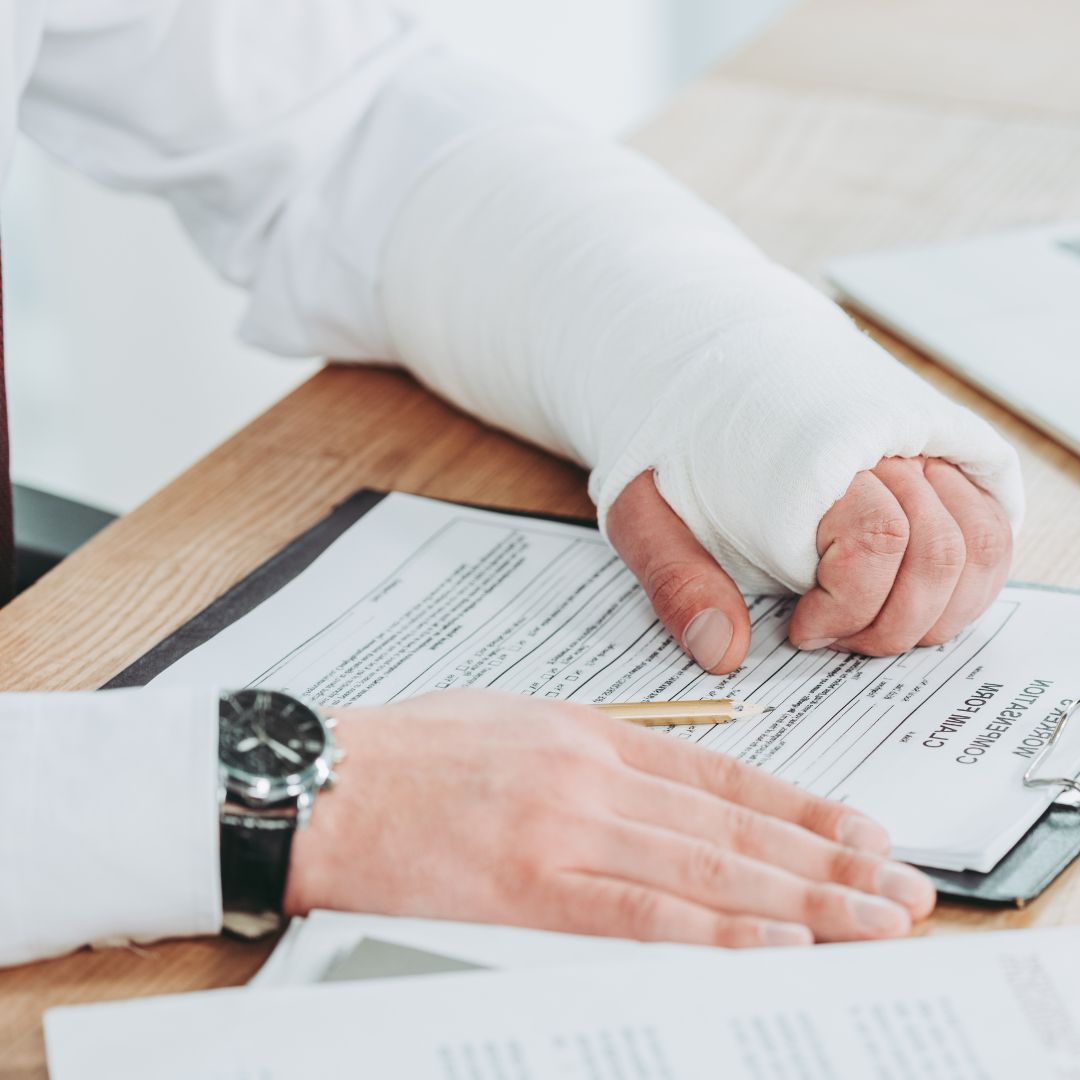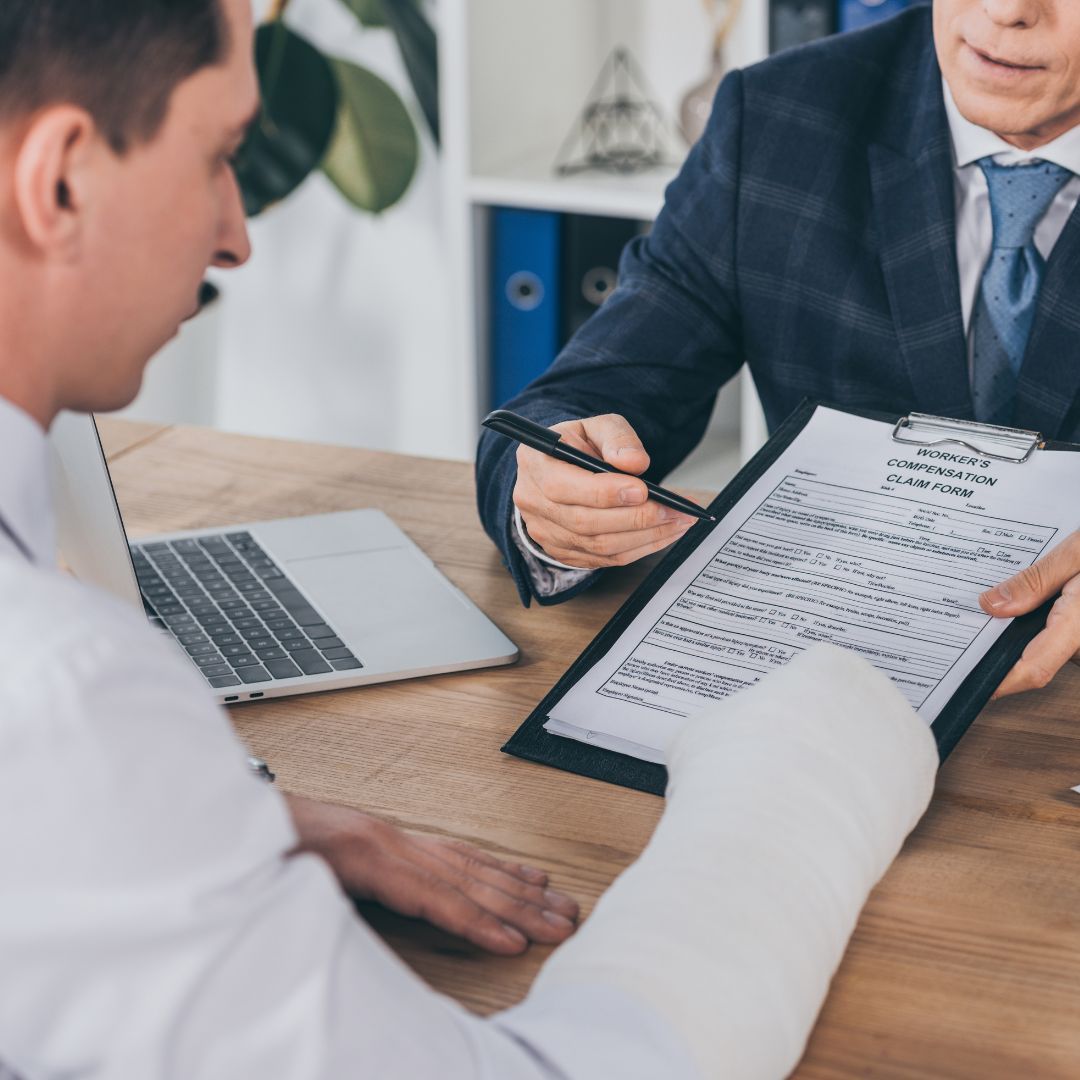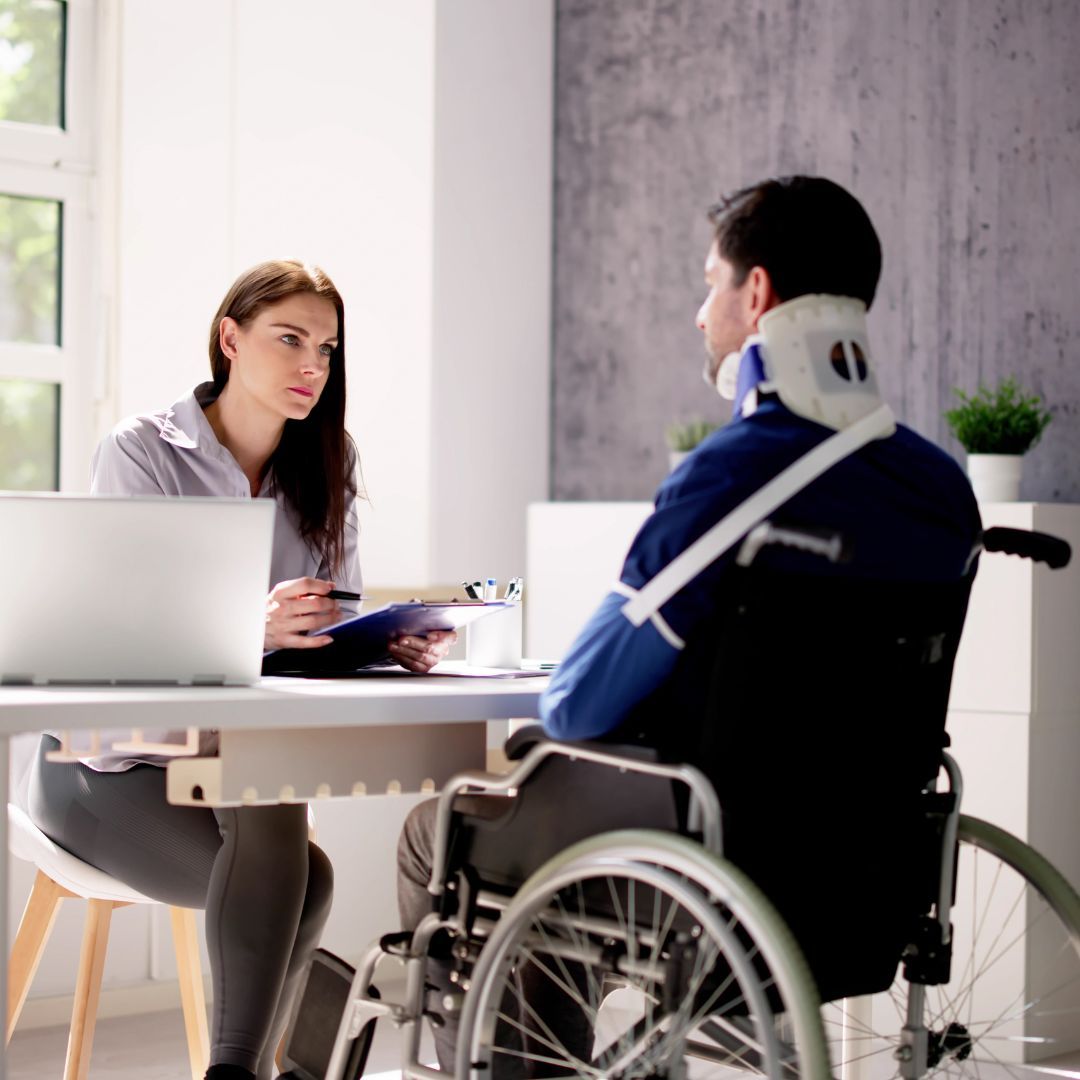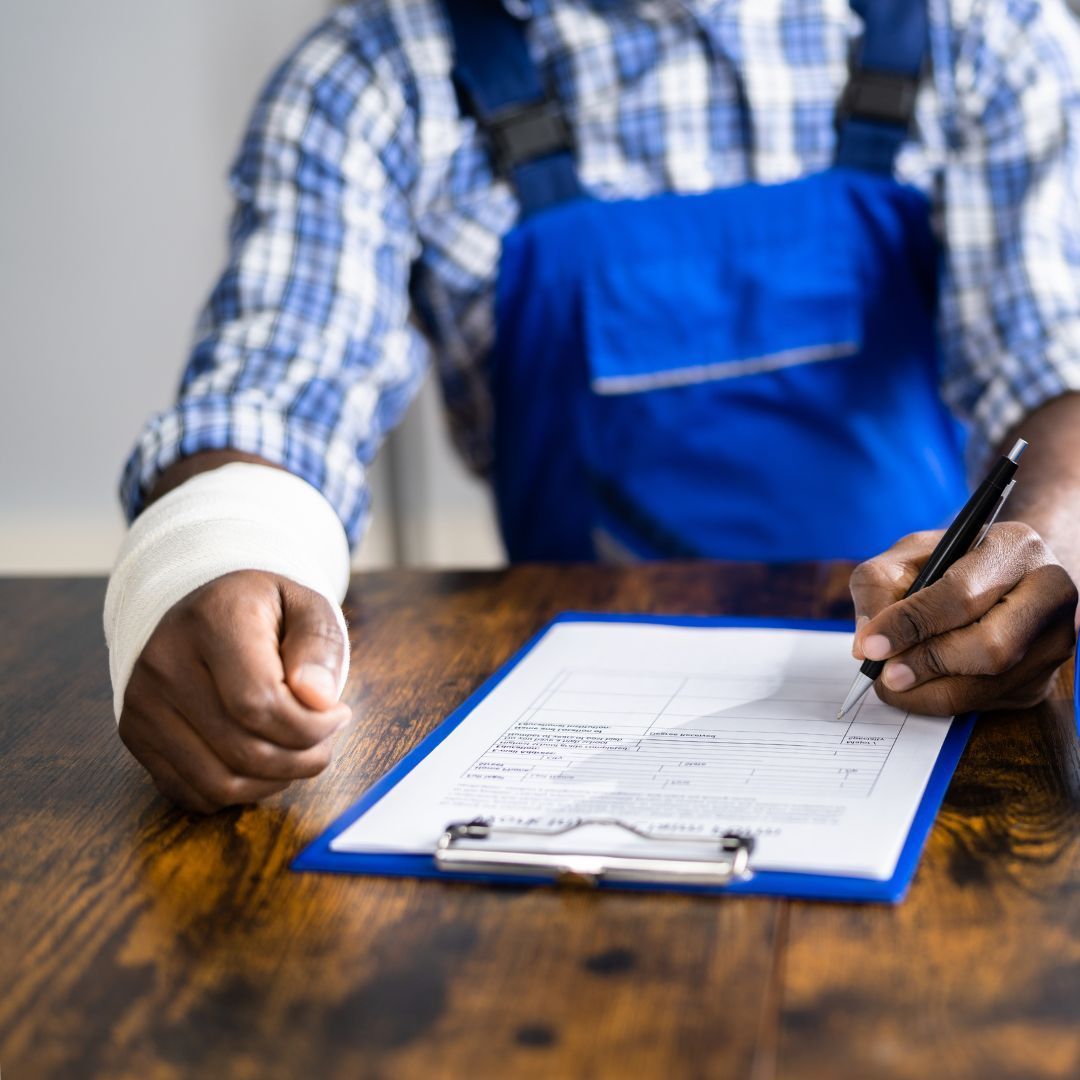Workers Compensation Insurance California For
LVN Workers
Index
Understanding Workers' Comp Insurance
California's Workers' Comp Insurance Laws
How to Obtain Workers' Comp Insurance in California
Costs Associated with Workers' Comp Insurance
Filing a Workers' Comp Insurance Claim in California
Contact Us
Phone
886-226-4436
Location
9340 Bolsa Ave, Westminster, CA 92683
Workers Comp By City
Workers Comp Insurance for LVN Workers: A Complete Guide
Workers’ compensation insurance is a state-mandated system designed to provide benefits to employees who suffer work-related injuries or illnesses. For Licensed Vocational Nurses (LVNs), this type of coverage is not just an important safety net—it’s essential protection in a high-risk profession. LVNs play a critical role in the healthcare system, often working long hours in physically and emotionally demanding environments. Whether employed in hospitals, nursing homes, home healthcare settings, or clinics, these professionals are constantly exposed to risks such as needle sticks, lifting injuries, exposure to infectious diseases, and violent patients.
The nature of their duties puts LVNs in a particularly vulnerable position, making workers’ comp coverage vital both for the employee's financial security and the employer’s legal protection. Employers in the healthcare industry must be proactive in managing risk, ensuring compliance, and fostering a safe workplace—and workers' comp insurance is a major pillar in achieving these goals.
Why LVNs Are Considered High-Risk Employees
Unlike desk-based roles, nursing is inherently physical. LVNs are responsible for a range of hands-on tasks: administering injections, lifting and transferring patients, assisting with mobility, managing medical equipment, and providing intimate personal care. Each of these tasks carries potential hazards. Overexertion injuries from lifting or repetitive movements are common. Slips, trips, and falls can occur in fast-paced hospital environments. Additionally, LVNs are often exposed to contagious diseases or violent behavior from unstable or disoriented patients.
Due to these elevated risks, insurance companies classify LVNs under high-risk employee categories, meaning premiums for workers' comp policies are generally higher for healthcare employers. However, the cost is a necessary investment, as it safeguards both the employee’s health and the employer’s financial well-being.
Typical Injuries Covered Under Workers Comp for LVNs
LVNs can suffer a variety of injuries and health conditions due to the nature of their job. Workers’ comp insurance typically covers the following:
- Musculoskeletal injuries: Back strain, shoulder injuries, or repetitive stress injuries from lifting patients or performing repetitive tasks.
- Needle stick injuries: Accidental pricks from used needles can lead to exposure to bloodborne pathogens such as hepatitis or HIV.
- Infectious diseases: Exposure to patients with tuberculosis, COVID-19, or other communicable diseases.
- Slips, trips, and falls: Occurring on wet floors, cluttered hallways, or during emergency patient handling.
- Mental health issues: In certain states, coverage may extend to PTSD or anxiety stemming from traumatic workplace events, such as violence or patient death.
- Violence-related injuries: Aggression from patients, especially in psychiatric or emergency settings, can result in physical injuries to nursing staff.
Having a workers' comp policy ensures that the LVN receives the medical treatment and wage replacement they need to recover while also protecting the employer from lawsuits.
Benefits Provided by Workers Comp Insurance
For injured or ill LVNs, workers' compensation insurance offers several essential benefits:
- Medical expenses: Coverage for doctor visits, hospital stays, surgeries, physical therapy, medications, and medical equipment.
- Lost wages: Partial wage replacement during the recovery period when the nurse cannot work.
- Temporary or permanent disability benefits: If the injury leads to temporary or permanent impairment, compensation is available based on severity and duration.
- Vocational rehabilitation: Assistance with retraining or transitioning to a different role if the LVN cannot return to their original job.
- Death benefits: If a work-related injury or illness results in death, the employee's dependents may receive compensation.
These benefits ensure that LVNs are not financially devastated by an accident that occurred while serving others.
Employer Responsibilities and Compliance
Employers of LVNs—such as hospitals, nursing homes, medical clinics, or home healthcare agencies—must carry workers’ compensation insurance as mandated by state law. Failure to do so can result in severe penalties, including fines, business closure, and civil lawsuits.
Employers must also:
- Post required notices: Informing employees of their rights under workers’ comp laws.
- Report incidents promptly: Accidents and injuries must be reported to the workers' comp carrier and, in many states, to the labor board.
- Maintain injury logs: As required by OSHA and other governing bodies.
- Ensure a safe work environment: Through training, adequate staffing, appropriate PPE (personal protective equipment), and ergonomic practices.
Some employers also invest in return-to-work programs, which help reintegrate LVNs into the workplace through light duty or modified roles during their recovery period.
How Workers Comp Claims Work for LVNs
When an LVN is injured on the job, the claims process typically follows these steps:
- Immediate reporting: The injury must be reported to a supervisor or HR department as soon as possible.
- Medical treatment: The employee should receive prompt medical attention from a designated provider, if the state or policy requires it.
- Claim filing: The employer and/or employee submits the appropriate documentation to the insurance carrier.
- Claim evaluation: The insurer investigates the incident, verifies medical reports, and determines eligibility.
- Benefits distribution: Once approved, the employee begins receiving benefits such as wage replacement and reimbursement for medical costs.
It’s essential that LVNs understand their rights and responsibilities during this process, including timelines for filing, attending medical evaluations, and communicating with adjusters.
Cost of Workers Comp Insurance for LVNs
Workers' compensation premiums are calculated based on several factors, including the job classification of the worker, the total payroll, and the employer’s claims history. Since LVNs are considered a higher-risk category, the base rate per $100 of payroll is typically higher than for lower-risk positions like clerical workers.
Defining the Scope of LVN Work and the Risks Involved
While their work is rooted in care and compassion, LVNs often operate in environments with high stress and physical demand. Whether employed in hospitals, rehabilitation centers, nursing homes, home healthcare settings, or private practices, these nurses must navigate long hours, patient handling, exposure to biohazards, and the emotional toll of caring for sick or aging individuals.
These conditions create a complex risk landscape. An LVN might strain their back while transferring a patient, get accidentally pricked by a contaminated needle, or even experience psychological distress after witnessing repeated medical trauma. These incidents not only affect their health but can lead to prolonged absences from work, lost wages, and significant medical expenses. That’s where Workers’ Comp Insurance steps in.
What is Workers’ Compensation Insurance?
Workers’ Compensation Insurance is a form of coverage mandated in most U.S. states that provides wage replacement and medical benefits to employees who are injured or become ill due to job-related activities. In return, employees generally relinquish the right to sue their employer for negligence. The system is designed to protect both employees and employers—ensuring injured workers are cared for while minimizing legal disputes and financial strain on the organization.
For LVNs, this type of insurance offers a vital safety net. Given the frequency and severity of potential injuries in healthcare settings, workers’ comp coverage not only ensures that nurses receive the treatment and support they need, but also that healthcare facilities remain legally and financially protected.
Why Workers’ Comp is Crucial in the Healthcare Sector
The healthcare industry consistently ranks among the highest for workplace injury rates in the United States. According to the Bureau of Labor Statistics (BLS), nursing assistants and licensed vocational nurses face some of the most injury-prone work conditions, with musculoskeletal injuries and exposure-related illnesses topping the list.
Unlike other industries where hazards are intermittent or seasonal, healthcare workers—including LVNs—are exposed to risk every day. They often lift patients without mechanical aid, spend long hours on their feet, and handle medical instruments and substances that pose infection or injury risks. Add to that the emotional burden of dealing with suffering or loss, and it's clear why workers’ compensation coverage must be both robust and accessible.
Common Workers’ Comp Claims Among LVNs
Injuries in nursing are often sudden and severe or cumulative and chronic. Among the most common workers’ comp claims filed by LVNs are musculoskeletal disorders, such as strains or sprains caused by lifting patients, pushing heavy equipment, or bending in awkward positions. Repetitive stress injuries are also prevalent, especially in long-term care environments.
Another major category is exposure-related injuries. LVNs may come into contact with bloodborne pathogens like hepatitis or HIV, especially when dealing with open wounds, used needles, or improperly disposed of medical waste. Accidental needle sticks are particularly concerning, as they not only pose a health risk but also often require extensive testing, treatment, and time off work.
Slip-and-fall incidents are also common, especially in fast-paced or poorly maintained clinical environments. An LVN rushing between rooms may trip on equipment cords or slip on recently cleaned floors. These accidents can lead to serious injuries like fractures or head trauma, necessitating immediate and extended medical attention.
Finally, mental health and emotional trauma are increasingly recognized within workers’ comp frameworks. Burnout, anxiety, and PTSD are not uncommon among LVNs, particularly those working in high-stress areas like emergency departments or palliative care units. While traditionally harder to claim, mental health-related injuries are gaining more attention in workers’ comp law, especially when tied to clearly traumatic work incidents.
Workers’ Comp Insurance: Legal Obligations for Employers
In most U.S. states, it is legally required for employers to carry workers’ compensation insurance—even if they employ just one nurse. The specifics vary slightly by jurisdiction, but healthcare businesses that employ LVNs are typically expected to have coverage in place from the moment of hiring. Failing to comply can result in severe penalties, including fines, criminal charges, and civil lawsuits.
For healthcare facilities, this legal requirement is about more than just compliance. It’s a strategic safeguard against potential financial devastation. If an LVN were to sustain a severe injury and the employer lacked workers’ comp coverage, the business could be held personally liable for medical costs, legal fees, and damages.
The Legal Mandate Behind Workers Compensation Insurance
Workers Comp Insurance is not optional in most U.S. states; it is a legal requirement for businesses employing workers, regardless of the size or nature of the organization. For LVNs, this coverage ensures that if they are injured on the job, they are entitled to receive medical treatment, wage replacement, and rehabilitation services without needing to file a lawsuit against their employer.
However, the nuances of this mandate vary by state. For example, in California—where a significant number of LVNs are employed—Workers Comp Insurance must be provided by all employers, including home healthcare agencies and even private individuals hiring LVNs for in-home care. Failure to comply can lead to severe penalties, including fines, business shutdowns, and even criminal charges.
What makes LVN coverage unique is that many of them work as independent contractors or through staffing agencies. In such cases, determining who is legally responsible for providing Workers Comp Insurance can become a complicated legal matter. Employers and healthcare administrators must consult legal counsel or insurance experts to ensure full compliance and risk mitigation.
Key Components of Workers Compensation Insurance for LVNs
The coverage offered under Workers Comp Insurance for LVNs typically includes medical expense coverage, wage replacement, disability benefits, and vocational rehabilitation. Medical coverage takes care of hospital bills, medications, and rehabilitation treatments resulting from workplace injuries or illnesses. Wage replacement ensures partial income for LVNs who cannot return to work immediately, calculated typically as a percentage of their average weekly wage.
Temporary disability benefits are offered when an LVN is expected to recover, while permanent disability benefits are extended when the injury leads to long-term impairment. In some severe cases, vocational rehabilitation is included to help LVNs transition to a different role or occupation if they are unable to perform their original duties.
Death benefits may also be part of the policy, offering financial support to the family members of an LVN who dies due to a workplace incident. These aspects form the backbone of Workers Comp Insurance and provide the foundational support that LVNs and their employers need in high-risk healthcare environments.
The Financial and Operational Benefits for Employers
From an employer's perspective, providing Workers Comp Insurance for LVNs is both a legal necessity and a financial safeguard. Without it, a single injury claim could lead to devastating lawsuits and out-of-pocket medical expenses that could cripple small healthcare providers or home care agencies.
Moreover, insured workplaces tend to see better employee morale and reduced turnover. When LVNs feel that their employer genuinely cares for their well-being and has mechanisms in place for their protection, they are more likely to remain loyal to the organization. This is especially critical in the healthcare industry, where burnout and staffing shortages are ongoing challenges.
Additionally, most insurance providers offer value-added services such as risk assessments, safety training programs, and claim management tools. These services help healthcare businesses proactively reduce risks, lower premiums over time, and maintain a culture of safety and compliance.
Navigating the Claims Process: What LVNs Should Know
When an LVN sustains a workplace injury, initiating a workers comp claim should be swift and well-documented. The first step typically involves reporting the injury to the employer immediately. Prompt reporting not only ensures timely medical treatment but also avoids complications related to claim denial or delayed compensation.
Once the claim is filed, the insurance provider will conduct an investigation to verify the incident and determine the benefits applicable. During this process, documentation becomes critical. LVNs must keep detailed records of medical treatments, symptoms, and work limitations. Employers should facilitate this process by providing claim forms, access to approved medical providers, and support throughout the duration of the claim.
Disputes can arise, particularly around the severity of the injury or the recommended course of treatment. In such cases, legal mediation or administrative hearings may be necessary. Both LVNs and employers should understand their rights and responsibilities under state-specific Workers Comp regulations to avoid protracted disputes.
Challenges Specific to LVNs in Workers Comp Coverage
One of the challenges in extending Workers Comp Insurance to LVNs stems from their employment model. Many LVNs are per diem workers or serve multiple clients as part of a broader staffing agency. In such fragmented work arrangements, it can be difficult to determine who bears the insurance responsibility.
Another challenge is the classification of LVNs as independent contractors. Some employers misclassify LVNs to avoid payroll taxes and insurance costs. However, courts and labor departments often scrutinize such arrangements, and employers found guilty of misclassification can face back pay, penalties, and retroactive insurance premiums.
Additionally, LVNs working in home care settings often face inconsistent safety environments. Unlike hospitals, private residences are not designed for medical procedures, and LVNs may lack access to lifting equipment or emergency backup. Workers Comp Insurance must be robust enough to account for these unique risks, and employers should provide training on how to navigate non-traditional care settings safely.
Workers Comp Insurance for LVN Workers
Licensed Vocational Nurses (LVNs), also known in some states as Licensed Practical Nurses (LPNs), play a critical role in healthcare systems across the United States. Whether working in hospitals, nursing homes, rehabilitation centers, or home health care, LVNs provide essential patient care under the direction of Registered Nurses (RNs) and physicians. However, their work also exposes them to a wide array of occupational hazards. This is where Workers’ Compensation Insurance becomes not only a legal necessity for employers but a vital safety net for LVN workers themselves.
In this blog, we’ll explore the nuances of Workers’ Comp Insurance specifically for LVN workers—why it’s needed, how it functions, its benefits, and how it intersects with broader industries like entertainment, hospitality, and manufacturing. We'll also touch on policy requirements, legal mandates, claim processes, and real-world examples that illustrate its critical role in protecting these essential workers.
The Role of LVNs and Their Workplace Risks
LVNs are trained to provide basic medical care, including monitoring vital signs, administering medications, dressing wounds, and supporting patients with daily living tasks. These duties often put them in high-risk environments where workplace injuries and illnesses are more than just possible—they’re common.
LVNs frequently work long hours, handle heavy lifting (such as repositioning or transferring patients), and are exposed to infectious diseases. Needle sticks, slips and falls, back injuries, and workplace violence are some of the most prevalent risks. The physical and emotional toll can be significant, and without proper coverage, a single injury can lead to overwhelming financial hardship.
Understanding Workers’ Comp Insurance for LVNs
Workers’ Compensation Insurance is designed to cover medical expenses, lost wages, and rehabilitation costs for employees injured or sickened due to work-related incidents. For LVNs, this type of insurance is particularly critical because of the physical demands and inherent risks of their profession.
In most U.S. states, employers are legally required to carry workers’ comp insurance if they have one or more employees. This requirement applies to healthcare facilities of all sizes, from large hospitals to small private practices and home healthcare agencies. Without proper insurance, employers not only risk severe legal penalties but leave their LVN staff vulnerable to uncompensated injuries.
Key Components of Workers’ Comp Insurance for LVNs
The specifics of what workers’ comp insurance covers can vary by state and policy, but for LVNs, several standard elements are typically included:
Medical Expenses: Coverage includes hospital bills, doctor visits, medication, surgery, rehabilitation, and physical therapy. Given the nature of LVN work, treatments for musculoskeletal injuries, exposure-related illnesses, and mental health support may all be covered.
Lost Wages: If an injury prevents an LVN from working temporarily or permanently, workers’ comp provides partial wage replacement. This financial assistance ensures that the injured nurse can focus on recovery without the added burden of income loss.
Disability Benefits: For more serious injuries, workers’ comp may provide temporary or permanent disability benefits. This includes both partial and total disability, depending on the extent of the injury.
Death Benefits: In tragic cases where an LVN dies as a result of a work-related incident, workers’ comp provides death benefits to the surviving dependents, helping cover funeral expenses and lost income.
High-Risk Work Environments for LVNs
The need for comprehensive workers’ comp coverage becomes even more apparent when looking at the variety of high-risk environments in which LVNs operate:
Hospitals and Emergency Rooms: LVNs in these settings face a fast-paced environment where slips, falls, lifting injuries, and exposure to contagious diseases are common.
Nursing Homes and Long-Term Care Facilities: LVNs working with elderly or disabled patients often manage patients with mobility issues, which increases the risk of back injuries, repetitive strain, and emotional burnout.
Home Health Care: Working in patient homes can be unpredictable. LVNs must navigate different environments that may lack basic safety standards. They may also be isolated, increasing their vulnerability to injury or even violence.
Correctional Facilities or Psychiatric Wards: In specialized facilities, LVNs are at greater risk of workplace violence or trauma-related injuries.
LVNs in Non-Traditional Settings: Entertainment and Hospitality Industries
While traditionally associated with hospitals and clinics, LVNs are increasingly finding roles in non-traditional sectors like entertainment and hospitality. Events such as concerts, conventions, film sets, and large-scale festivals often require on-site medical personnel to attend to both staff and guests. LVNs hired in these capacities are exposed to a different, yet equally dangerous, set of occupational hazards.
For example, an LVN working backstage at a concert might have to deal with crowd-related injuries or respond to medical emergencies in less-than-ideal conditions. In the hospitality industry, resorts and cruise ships often employ LVNs to attend to medical needs of guests and staff—bringing unique challenges like long shifts, isolation, or limited access to emergency facilities.
In such cases, the intersection between healthcare and hospitality/entertainment demands customized workers’ comp insurance policies that account for the unusual nature of the work setting.
Intersections with Industrial and Manufacturing Sectors
Though LVNs are not commonly found on the factory floor, their services are still required in industrial settings, especially in large manufacturing plants or energy production facilities. Onsite medical staff, including LVNs, may be employed to provide first aid, administer drug tests, and monitor employee health.
In such environments, the risk of chemical exposure, machinery accidents, or industrial injuries also affects the LVN workforce. These roles further emphasize the importance of robust insurance coverage, tailored to meet the needs of LVNs in industrial or high-hazard settings.
What does entertainment insurance cover?
- Cancellation and Postponement: If an event, performance, or production needs to be canceled or postponed due to unforeseen circumstances (like illness, accidents, or natural disasters), entertainment insurance can cover the financial losses.
- Liability Insurance: This covers the risk of injury or property damage to third parties during an event or production. It protects producers, organizers, and venues from lawsuits and claims arising from accidents.
- Equipment and Property Damage: It covers the cost of repairing or replacing damaged equipment, props, or sets that are essential for a production or event.
- Cast Insurance: This covers the risk of cast members or performers being unable to participate in a production due to illness, injury, or even death, potentially causing delays or additional costs.
- Event and Production Delays: If a production is delayed due to unforeseen circumstances (such as technical issues, weather, or illness), insurance can help cover the additional costs associated with delays.
How much is entertainment insurance?
- Type of event: A small local concert might have lower premiums compared to a large international music festival or a major film production.
- Coverage options: Standard entertainment insurance can cover things like liability, equipment, cancellation, or weather-related disruptions. The more comprehensive the coverage, the higher the cost.
- Duration and location: An event taking place over several days or in a high-risk area may cost more to insure.
What is the hospitality insurance?
Hospitality insurance is a type of business insurance specifically designed for businesses in the hospitality industry, such as hotels, restaurants, bars, resorts, and other service-based establishments. It provides coverage against a variety of risks that these businesses face, including:
- Liability Insurance: Protects against claims for injuries or accidents that occur on the premises. This can include guest injuries or property damage.
- Business Interruption Insurance: Covers loss of income if the business is temporarily unable to operate due to a covered event, such as a fire or flood.
- Workers' Compensation: Provides coverage for employees injured while working, covering medical expenses and lost wages.
- Liquor Liability: For establishments that serve alcohol, this coverage helps protect against claims related to alcohol-related incidents.
What kind of insurance does a hotel need?
Hotels, like any business, need various types of insurance to protect against a wide range of risks.
REQUEST A QUOTE
Speak with a CA Workers Compensation Insurance specialist today!
Learn More About Workers Comp. Insurance











